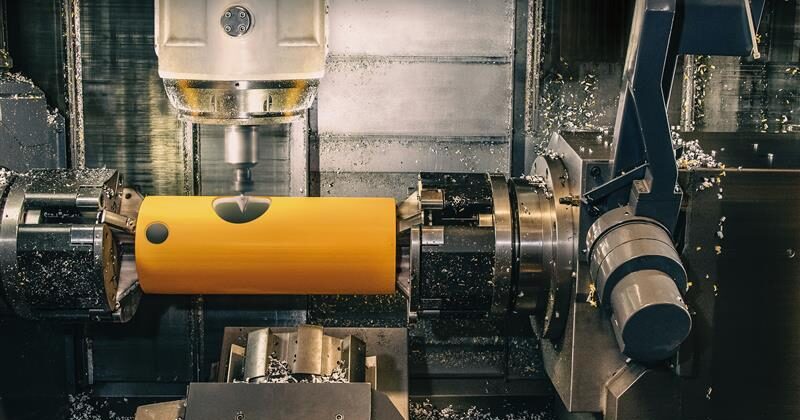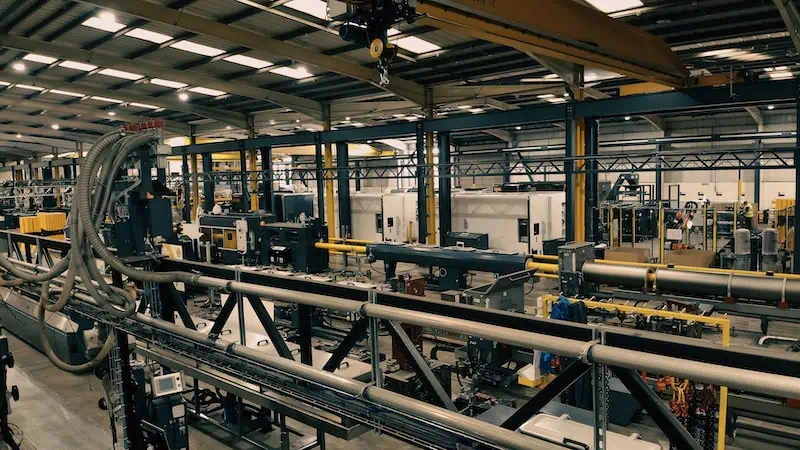Is Your Safety Infrastructure Built For The Risks Of Today, Or Stuck In The Past?

Industrial risk has changed. Vehicles are faster, their loads are heavier, machines and robots dominate the space and expectations for speed and efficiency have never been higher. Yet, many businesses continue to rely on materials and solutions from another era to manage this new level of risk and still meet their goals.
The limitations of traditional safety solutions are exposed daily, not just in terms of their protection lifecycle but also for the lack of data-driven insights that their newer counterparts can provide. Their continued use in environments that demand more than basic impact protection is no longer feasible. This approach must change before the next near miss becomes a headline or worse, a statistic.
Why Yesterday’s Materials Are Creating Today’s Risks
There is no denying the outstanding role traditional materials like steel have played in building industrial resilience. Their strength, durability, and widespread availability made them the obvious choice for decades. They created a sense of confidence and control in facilities whose operations were simpler and slower. But modern operations no longer operate at that pace. Risk now changes with every shift.
The limitations of these legacy materials show up most clearly in environments where movement is continuous, and conditions are constantly evolving. Static structures designed to withstand single, high-force events often perform less reliably when faced with repeated, lower-level impacts. As a result, they begin to degrade. That degradation undermines both performance and perception. Businesses that rely on visual inspections or sporadic maintenance risk overlooking early signs of failure. In that context, relying on materials developed for a different industrial age is no longer sufficient.
Workplace safety must account for frequency, not just severity. It must reflect real-world variables like angle of impact, load weight, and operational tempo. Safety systems from past decades were not developed with this in mind. Their continued use, while understandable, now exposes facilities to gaps in protection. Protection that looks strong on paper but fails to match the risk profile on the floor cannot be considered fit for purpose.
Polymer: A Material Choice That Matches Modern Risk
As operations have modernized, so has safety infrastructure. Advanced polymer barriers offer a step change in how risk is managed and mitigated. Unlike traditional materials that can deform permanently after an incident and can take hours or even days to replace, polymer systems are engineered to maintain structural integrity after impact and can be installed or replaced in mere minutes. This resilience makes them more suitable for busy environments where contact with equipment is a regular occurrence, and downtime is simply not an option.
When a barrier bends but does not break, there is no downtime. That is not just an operational advantage but a financial one as well. Unplanned downtime is one of the costliest financial challenges companies face, with the average incident costing around $125,000 per hour according to a report by ABB, which amounts to millions of dollars every year. The scale of the financial impact is staggering. Across industries, unplanned downtime can amount to millions in lost revenue each year. With modern safety infrastructure, unplanned downtime is reduced considerably. Facilities stay open, teams stay productive, and maintenance becomes a planned activity instead of an emergency response.
Polymer does not pretend to be indestructible. Its advantage lies in its ability to perform repeatedly, with minimal disruption and maximum predictability. But modern material choice goes beyond strength or flexibility. Modern safety barriers and bollards are increasingly embedded with smart sensors that provide real-time insight into where, when, and how impacts occur. This visibility transforms safety from a reactive response into a live operational input. Risk becomes something measurable. Patterns emerge and adjustments follow before incidents happen. The barrier becomes part of a feedback loop that improves the efficiency and safety of the wider operation.

Smart Materials Reduce Cost And Increase Clarity
When downtime is reduced and inspection becomes data-driven, safety management becomes proactive. Instead of replacing an entire system after a major event, teams can act early based on real data usage. Is there a specific area in the warehouse that accumulates a large number of knocks? Are pedestrians and vehicles coming too close to each other with a risk of contact? Are your forklift truck routes as efficient as they could be? All these questions can be answered by data, and this data comes from your safety infrastructure.
As operations shift to more data-driven models, the material choices that underpin those environments must support that evolution. Traditional systems sit outside of this loop. Polymer brings smart technology into it, with structures that are easier to monitor, faster to manage, and sharper at spotting risk.
A Strategic Shift In How Safety Is Approached
The question facing many operations leaders is no longer whether their current infrastructure is safe, but whether it is still appropriate. Yes, painted lines on the floor and outdated safety barriers may still tick the safety checkboxes, but why settle for this when your competitors’ safety solutions are helping them grow their bottom line? What worked in the past may still function, but that does not make it fit for the future. This distinction matters. Safety infrastructure is not just about strength. It is about suitability, adaptability, and relevance.
Modern safety systems are built for different demands and are the answer to industry’s evolution. It is a practical decision, grounded in the daily reality of what workers face and what businesses demand. Facilities that make this change position themselves safer and smarter.
Treating safety as an evolving requirement instead of a fixed asset allows businesses to invest more wisely, operate more efficiently, and respond more quickly. The materials used to manage risk should match the nature of that risk. That match is harder to find in systems designed for yesterday’s challenges. With advanced polymer solutions, businesses are making the move from static protection to dynamic performance.
Final Thoughts
Reluctance to invest in safety infrastructure often comes from viewing it as a cost to be managed rather than a lever for growth. Yet, the reality inside modern operations tells a different story. A report by OSHA revealed that businesses see an average return of $4 to $6 for every dollar invested in their workplace safety programs. This is because treating safety as a strategic investment results in fewer disruptions, faster workflows, lower maintenance bills, and stronger compliance. In high-pressure environments, those advantages turn into measurable ROI – gains in output, reputation, and profitability.
Waiting for incidents to prove modern safety’s worth is a careless approach. Each hour lost to unplanned downtime, each damaged asset, each missed chance to optimize operations has a financial impact. Advanced risk management is an investment, never an expense; it is the basis of a business with ambitions for efficiency and growth.
If your safety infrastructure is only physical protection, you are missing out on its potential to add real value. True growth starts when you consider safety as a strategic advantage, not a necessity.
By James Smith

James Smith is Co-CEO at A-SAFE. With 25 years of experience in the industry, Smith has transformed this family business into a global enterprise with 700 employees and presence in over 65 countries. Smith is based in West Yorkshire (UK), and specializes in industrial safety innovation, product development, and global market expansion, with a rigorous focus on quality testing standards and a strong passion for building lasting customer relationships.
Read more news and insights about Workplace Safety on Facility Executive.

